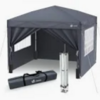The signup process for Agile really left me wondering. I submitted it, got no feedback at all then 2 weeks later, an email saying that I will be on it from the previous midnight if I click to accept the terms.
I had a similar E-mail, but it arrived the next morning (Saturday). I'd had smart meters installed on the friday afternoon, chap finsihed about 5pm, I clicked to change over to agile straight away, expecting to have to ring them to follow it up on the Monday morning, but I got a email next morning saying I was on it from the start of Saturday at midnight if I clicked accept. I had asked them when booking the smart meters if I could start the tariff switching process in advance of having meter change so any waiting happened concurrently, but was told that wasn't possible and as it turns out wasn't a concern anyway. I had to call up about a week or so later to get the gas onto the tracker tarriff as I think the sign up for that on the website would move both onto that which I didn't want, but that was no troublem although she did have to go and speak to someone to confirm that it was possible.
Need to find something that warns me proactively of upcoming price drops like tonight's. Suggestions?
I think a lot of folk use apps like octopus watch, but pretty sure you have to pay a subscription. Theres an octopus energy group on reddit that has quite a few suggestions. Personally I'm just in the habbit of checking https://agileprices.co.uk/ in the evening, you can also get the prices out of the octopus app on your phone if you have it (Do you have one of those pink home mini things btw?) but its a little more faff.
My zappi EVSE pulls the pricing from the octpus API, so I can tell it "Charge between x time and y time, if the price is less than £0.z" or "Car will be plugged in between x time and y time, I need z amount of units, get them at the cheapest price" but of course that relies on the car being plugged in and being able to set a defintae rule (which would be the case for someone with a long commute, etc" I don't do enough miles to require charging every day, so I typically just try and charge on the day that looks best and pick a price point that I want it to charge at, and then let it start and stop throughout the night as requiredd. Unless I've got a longer trip comming up and then I tell it how many units I want and it gets them at best price
https://emoncms.org/ukgrid/app/view?name=UKGrid , https://www.carbonintensity.org.uk/ , https://energy.guylipman.com/forecasts?region=C
can be useful for getting an idea of when the lowest prices are going to be, but predicting the future is far from an exact science.
Sometimes to maximise it, you need to get a little OCD about it.




